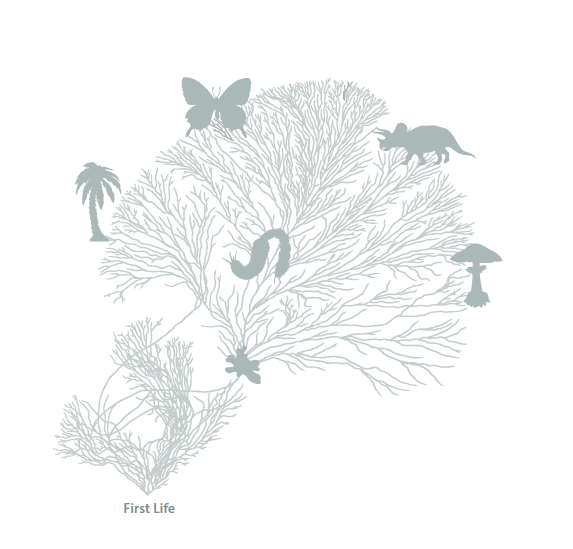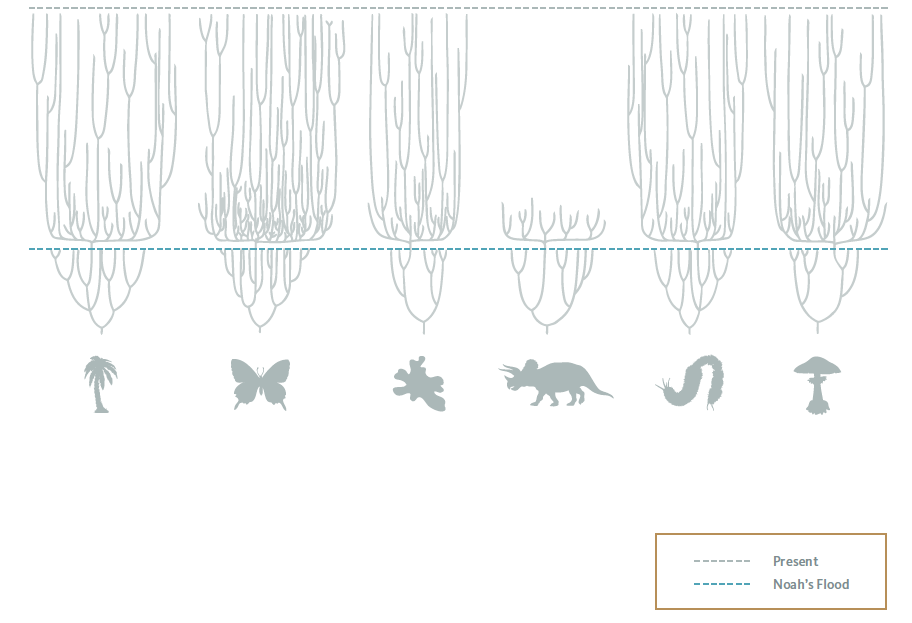Cladistics and Classification
People like to group things together. In fact, Adam was the first person to organize things. In the Garden of Eden, one of the first things we are told he did was name the animals. Throughout history, man has followed Adam’s example and classified animals. However, the modern classification system was not developed until the 1700s. The original system was designed by a creationist and Christian named Carl Linnaeus. Linnaeus invented what we call binomial nomenclature. Binomial nomenclature is a fancy way of saying animals have two names, the genus and species name. As an example, the lion is called Panthera leo in binomial nomenclature. Before Linnaeus, creatures had been given names which described them but were so long that they were hard to use. By creating a classification system based on binomial nomenclature, Linnaeus made it much easier for scientists to know exactly what animal their colleagues were talking about at a glance.
However, when Darwin came along, the system began to change The system Linnaeus built was simply an ordered classification. People who believed in evolution changed how the system was interpreted. For example, evolutionists assume that, because dogs and cats are both carnivores, they must have had a common ancestor. To try to prove this, they attempt to use something called cladistics. Cladistics examines the traits of different organisms to try to determine if they are related. Think of it like grouping stickers based on their shape, then attempting to find a common ancestor for the shapes. Just because you can group stickers by shape does not mean they were made in the same factory, nor does it mean they share a common ancestor with glue just because both are sticky. The results of a cladistic study are shown as something called a phylogenetic tree, or tree of life.
Evolutionary Perspective on the Origin of Species

Chance processes produced the first living cell around four billion years ago. Over millions of years, random mutations increased genetic diversity and led to new species on a single “tree of life.” Over time, each species lost the ability to produce hybrids with other species.1
Creationist Perspective on the Origin of Species

God created every “kind” of creature around 6,000 years ago. From the beginning, each “kind” had the genetic diversity and potential necessary to produce new species quickly. These species belong to independent families in an “orchard,” often retaining the ability to produce hybrids within a family.1
Common traits are the result of a common designer.
Cladistics assumes that shared traits are evidence for a common ancestor. Of course, this is not the case. Common traits are the result of a common designer. By assuming that shared traits are evidence of evolution, cladistics actually introduces a problem called circular reasoning. It assumes common ancestry, then attempts to prove common ancestry by looking at traits it assumes came from a common ancestor. In other words, common ancestry is used to prove common ancestry!
Cladistics provides no evidence for evolution.
Some evolutionists actually recognize they have a problem. One called cladistics “untestable”2 while another pointed out that no phylogenetic tree that cladistics produces can be falsified.3 Falsifying something means that it can be disproved. Cladistics is not falsifiable since there is no known standard to compare it against. We are not seeing change from one kind into another happening in the present. According to evolutionists, evolution happens too slowly to observe. One evolutionist remarked, “Evolution has been observed. It’s just that it hasn’t been observed while it’s happening.”4 Obviously this is ridiculous. You cannot observe something before or after it happens. Testing and falsifying things are a key part of the scientific method. Since phylogenetic trees and cladistics do not meet those requirements, they can’t be good science. Cladistics provides no evidence for evolution.
Related Media
Kinds
Related Downloads
Cladistics and Classification Word Search
PDF DownloadFootnotes
- Tom Hennigen, “The Great Species Mixup,” Answers, November–December 2017, 54–62, https://answersingenesis.org/hybrid-animals/great-species-mixup/
- Andrew V. Z. Brower, “Evolution Is Not a Necessary Assumption of Cladistics,” Cladistics 14 (2000): 143–154.
- W.H. Wagner Jr., “Origin and Philosophy of the Groundplan-Divergence Method of Cladistics” in Cladistic Theory and Methodology, ed. Thomas Duncan and Tod F. Stuessy, (New York: Van Nostrand Reinhold Company, 1985).
- PBS “Bill Moyers Interviews Richard Dawkins on NOW” last modified 12/03/2004, https://www.pbs.org/moyers/faithandreason/print/dawkins_print.html
- © 2024 Answers in Genesis
- Privacy Policy
- Contact
- About
